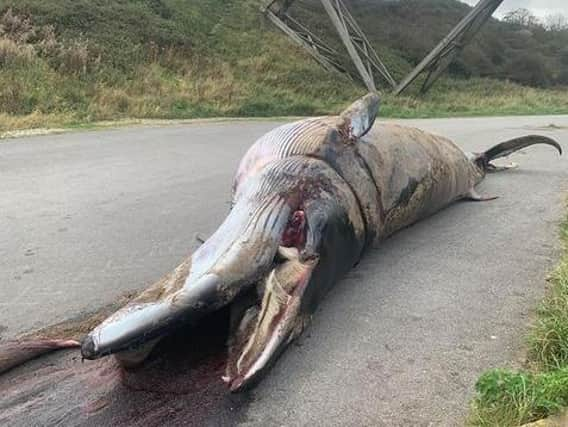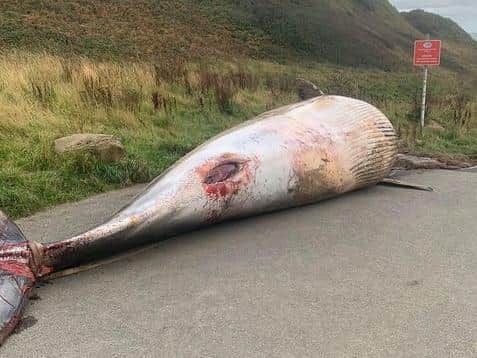Experts' examination of Whitby whale carcass suggests lobster pot line caused its death


Earlier this month, three dead minke whales were spotted off the coast of Whitby, and their bodies showed visible evidence of the animals having become entangled in fishing wire.
The carcass of one washed ashore soon after at Upgang Ravine, and a local building firm used a JCB to drag the whale onto a nearby road to await an autopsy. The body of a second was seen drifting near Kettleness, and the third beached at Staithes, though it is thought they may have since been carried back out to sea.
Advertisement
Hide AdAdvertisement
Hide AdExperts from the Cetacean Strandings Investigation Programme, who are based at the Natural History Museum in London, were informed of the deaths, but were working elsewhere in the UK at the time and were unable to reach Whitby in time to complete an autopsy before the carcass began to decompose.


However, a scientist was able to examine the corpse and collect samples and data from it before a contractor removed the remains on behalf of Scarborough Council.
Rob Deaville from the CSIP said that these examinations appeared to confirm that the whale beached at Upgang had died from entanglement and that 'creel' lines used by lobster fishermen were to blame.
Creel fishing involves the use of pots which are laid on the seabed and linked together by chains attached to buoys on the surface. Lobster and crab harvesting is usually carried out by local trawler crews, and is known as a more sustainable method of fishing as it is species-specific, the vessels remain close to shore and there is little by-catch.
Advertisement
Hide AdAdvertisement
Hide AdMr Deaville said: "The evidence from this case would suggest that entanglement (likely in creel lines) was a probable factor in this animal's death. Entanglement is a known cause of death/pressure in minke whales in other parts of the UK; and we have previously examined other minke whales in the region where entanglement has been a factor in their death. So the evidence from at least some of the recent strandings is unfortunately perhaps not surprising."
The CSIP members are contracted by government department DEFRA to carry out autopsies and investigations, but after this point - unless the whale's skeleton is taken for display purposes - it is the responsibility of the landowner to arrange disposal of the carcass for public health reasons.
Some whales have been taken to landfill sites after previous strandings, but they can also be incinerated.
Comment Guidelines
National World encourages reader discussion on our stories. User feedback, insights and back-and-forth exchanges add a rich layer of context to reporting. Please review our Community Guidelines before commenting.